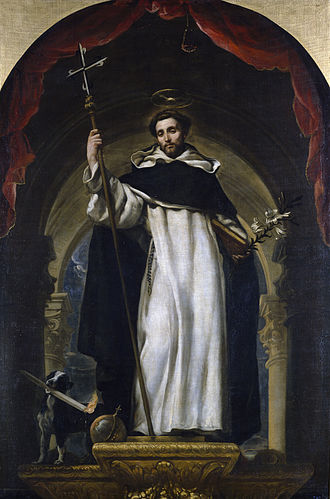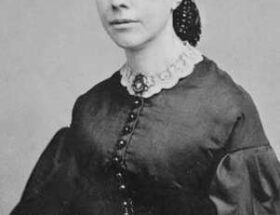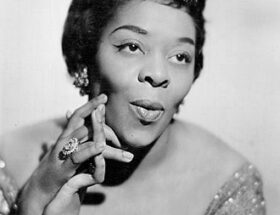
Early life
Dominic was born on 8 August 1170 in Caleruega, halfway between Osma and Aranda de Duero in Old Castile, Spain. He was named after Saint Dominic of Silos.
In the earliest narrative source, by Jordan of Saxony, before Dominic’s birth his barren mother made a pilgrimage to the Abbey at Silos, and dreamt that a dog leapt from her womb carrying a flaming torch in its mouth, and seemed to set the earth on fire. Jordan adds that Dominic was brought up by his parents (Jane of Aza and Felix de Guzmán) and a maternal uncle who was an archbishop.
Education
In 1184, Dominic was sent to the Premonstratensian monastery of Santa María de La Vid and subsequently transferred for further studies in the schools of Palencia. In Palencia, he devoted six years to the arts and four to theology. At some point he also joined Santa María de La Vid as a canon.
In 1191, when Spain was desolated by famine, 21-year-old Dominic gave away his money and sold his clothes, furniture and even precious manuscripts to feed the hungry. Dominic reportedly told his astonished fellow students, “Would you have me study off these dead skins when men are dying of hunger?”
At the age of 24, Dominic was ordained as a priest, and subsequently joined the canonry of the Cathedral of Osma. In 1198, Diego de Acebo, the Bishop of Osma, having reformed the chapter and assigned himself as prior, made Dominic the subprior of the chapter.
In 1203 or 1204 Dominic accompanied Diego de Acebo on a diplomatic mission for Alfonso VIII, King of Castile, to secure a bride in Denmark for crown prince Ferdinand. The envoys traveled to Denmark via and the south of France. The marriage negotiations ended successfully, but the princess died before leaving for Castile.
During their return journey, they met with Cistercian monks who had been sent by Pope Innocent III to preach against the Cathars, a Christian religious sect with gnostic and dualistic beliefs which the Catholic Church deemed heretical. Dominic and Diego de Acebo attributed the Cistercians’ lack of success to their extravagance and pomp compared to the asceticism of the Cathars.
They decided to adopt a more ascetic way of life and began a program in the south of France to convert the Cathars. Catholic-Cathar debates were held at Verfeil, Pamiers and Montréal. Diego de Acebo later died, leaving Dominic alone in his mission.
Foundation of the Dominicans
In 1215, Dominic established himself with six followers in a house given by Peter Seila, a rich resident of Toulouse. He saw the need for a new type of organization to address the spiritual needs of the growing cities of the era, one that would combine dedication and systematic education, with more organizational flexibility than either monastic orders or the secular clergy.
Dominic subjected himself and his companions to the monastic rules of prayer and penance, with Bishop Foulques giving them written authority to preach throughout the territory of Toulouse. In the same year, Dominic and Foulques went to Rome to secure the approval of the Pope, Innocent III.
Dominic returned to Rome in 1216 and was finally granted written authority in December 1216 and January 1217 by the new pope, Honorius III, for him to form the Ordo Praedicatorum (“Order of Preachers”).
During the winter of 1216–1217, at the house of Ugolino de’ Conti, Dominic first met William of Montferrat, who joined him as a friar in the Order of Preachers and remained a close friend.
Later life & Death
Cecilia Cesarini, who was received by Dominic into his new order, described him as “thin and of middle height. His face was handsome and somewhat fair. He had reddish hair and beard and beautiful eyes … His hands were long and fine and his voice pleasingly resonant. He never got bald, though he wore the full tonsure, which was mingled with a few grey hairs.”
Although Dominic traveled extensively to maintain contact with his growing brotherhood of friars he made his headquarters in Rome. In 1219, Pope Honorius III invited Dominic and his companions to take up residence at the ancient Roman basilica of Santa Sabina, which they did by early 1220.
Before that time the friars had only a temporary residence in Rome at the convent of San Sisto Vecchio, which Honorius III had given to Dominic in 1218, intending it to become a convent for a reformation of nuns at Rome under Dominic’s guidance.
The official foundation of the Dominican convent at Santa Sabina with its studium conventuale, the first Dominican studium in Rome, occurred with the legal transfer of property from Pope Honorius III to the Order of Preachers on 5 June 1222.
Dominic arrived in Bologna on 21 December 1218, where a convent was established at the Mascarella church by Reginald of Orleans. Soon afterwards they had to move to the church of San Nicolò of the Vineyards Dominic settled in this church and held here the first two General Chapters of the order.(Guiraud Jean, 1913)
According to Guiraud, Dominic abstained from meat, “observed stated fasts and periods of silence”, “selected the worst accommodations and the meanest clothes”, and “never allowed himself the luxury of a bed”. Furthermore “when travelling, he beguiled the journey with spiritual instruction and prayers”. Guiraud also states that Dominic frequently traveled barefoot while “rain and other discomforts elicited from his lips nothing but praises to God”.
Dominic died at noon on 6 August 1221 after reaching the convent of St Nicholas at Bologna, Italy, “weary and sick with a fever”.Guiraud states that Dominic “made the monks lay him on some sacking stretched upon the ground” and that “the brief time that remained to him was spent in exhorting his followers to have charity, to guard their humility, and to make their treasure out of poverty”.
His body was moved to a simple sarcophagus in 1233 and under the authority of Pope Gregory IX, Dominic was canonized in 1234.
In 1267 Dominic’s remains were moved to the shrine, made by Nicola Pisano. (Guiraud Jean, 1913)



